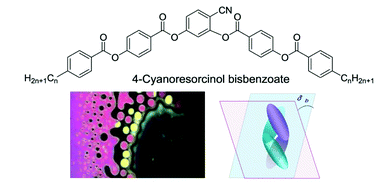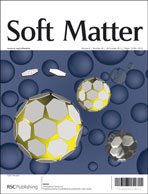Chirality of an achiral bent-core nematic mesogen observed in planar and homeotropic cells under certain boundary conditions
Abstract
It is shown that planar and homeotropic cells under certain boundary conditions containing an achiral bent-core C5 liquid crystalline material show chiral domains of opposite handedness. However such domains are not seen in other members of the homologous series which show cybotactic clusters of larger sizes. The stability of such chiral domains in a planar cell depends not only on temperature but also on the device parameters such as the cell gap and the angle between the rubbing directions on the substrates. The energy difference between the two states with different twist angles measured with respect to the rubbing direction is expressed in terms of the device parameters. The chirality of the material with a pitch length of 9 μm is discussed in terms of the molecular symmetry created by the formation of a pair of the two bent-core molecules, which acts as a chiral dopant. The results of the study on C5 are compared with a prediction from a theoretical model with higher order molecular interactions in the bent-core system and it is suggested that the observed phase is a tetrahedratic chiral nematic phase of D2 symmetry as recently suggested by [Longa et al., Phys. Rev. E: Stat., Nonlinear, Soft Matter Phys., 2009, 79, 040701].


 Please wait while we load your content...
Please wait while we load your content...